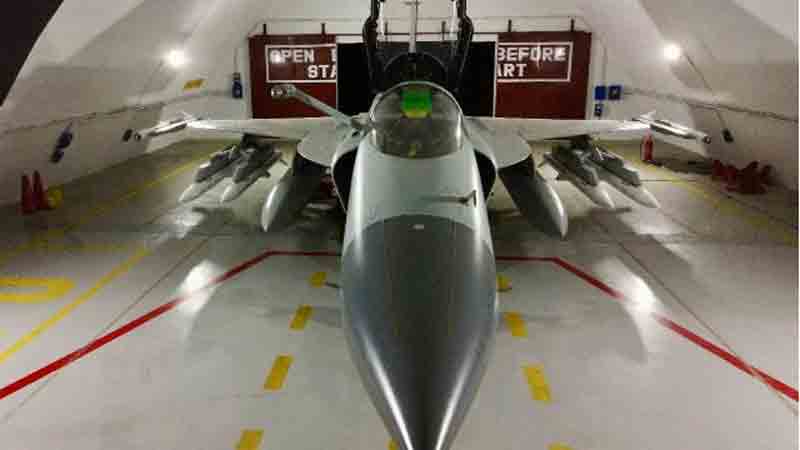In their inaugural real-world air combat operation, the Pakistan Air Force (PAF) J-10C fighters, equipped with Chinese-manufactured Beyond Visual Range (BVR) missiles and operating under complete radio and radar silence, successfully executed an ambush that resulted in the downing of three Indian Air Force Rafale jets. This operation, characterized as a textbook ambush, also led to the loss of a Mirage 2000, a Su-30MKI, and a MiG-29 by India, with investigators retrieving Russian-made K-36DM ejection seats from the crash sites, confirming the involvement of these aircraft.
In a bold and unprecedented statement, Pakistan’s Foreign Minister Ishaq Dar asserted that the PAF had successfully shot down five Indian Air Force (IAF) fighter jets, including three advanced Rafales, utilizing Chinese-built J-10C fighters armed with PL-15E beyond-visual-range air-to-air missiles (BVRAAMs). “The much-publicized Rafale jets performed poorly, and Indian pilots demonstrated significant incompetence,” Dar remarked. “Our forces had the capability to take down 10 or 12 aircraft, but there was a strict directive to engage only those that fired first,” he added.
Importantly, the Rafales were intercepted and destroyed nearly 100 kilometers within Indian airspace, while the Pakistani fighters remained within their own borders throughout the engagement, indicating a strategic shift towards stand-off air superiority.
Analysis of the wreckage confirmed that the Indian aircraft were downed by Chinese-made PL-15E beyond-visual-range (BVR) air-to-air missiles, an export variant of the PL-15 with a range of up to 145 kilometers. The full-strength PL-15, exclusively utilized by the People’s Liberation Army Air Force (PLAAF), is believed to have a range of 200 to 300 kilometers depending on launch conditions such as altitude and speed. Capable of reaching speeds close to Mach 5, the PL-15 family employs active radar homing in the terminal phase, providing exceptional accuracy even against maneuvering or jamming targets.
Indian Rafales were reportedly on their way to deploy Storm Shadow/SCALP cruise missiles—stealthy deep-strike munitions with a combat range exceeding 550 kilometers—when they were intercepted. Sources indicate that the Rafales were equipped solely with the infrared-guided variant of the MICA missile, which has a range of 60 kilometers, while the longer-range radar-guided version (80 km) was not included in the mission. Indian crews may have mistakenly believed that their distance from the border provided safety, underestimating the potential for a long-range strike using advanced BVR missiles from Pakistani airspace.
The PAF J-10Cs maintained complete radar and radio silence throughout the operation, utilizing real-time guidance from airborne early warning and control (AEW&C) systems, including the Swedish Saab 2000 Erieye and the Chinese ZDK-03 Karakoram Eagle. As of 2025, the Pakistan Air Force operates nine Saab 2000 Erieye AEW&C aircraft equipped with AESA radars capable of detecting aerial targets at ranges up to 450 kilometers and securely sharing this information across the battlefield.
Additionally, the PAF acquired four ZDK-03 AEW&C aircraft between 2011 and 2015, based on the Shaanxi Y-8F600 airframe and outfitted with Chinese-developed radar systems. These AEW&C platforms transmitted targeting information to the J-10Cs via encrypted datalinks, allowing the fighters to remain electronically silent while maintaining comprehensive situational awareness. In contemporary military aviation, achieving total radar and radio silence entails completely disabling an aircraft’s radar and communication systems to evade detection by enemy sensors or electronic intelligence units.
Radar silence prevents radar warning receivers (RWRs) from detecting electromagnetic emissions, while radio silence hinders interception of voice or data communications like Link 16, enhancing deep-strike survivability. This electromagnetic stealth enabled PAF fighters to remain undetected until their weapons were deployed, at which point the AEW&C aircraft guided the missiles mid-course. In the last 20 to 30 kilometers of their flight, the PL-15E’s onboard X-band radar seeker activated, locking onto targets with deadly accuracy.
The Indian Rafales, despite their RBE2 AESA radar boasting a theoretical detection range of 200 kilometers, were unable to identify the incoming threat. Analysts largely attribute this failure to the PAF jets operating at very low altitudes, utilizing the mountainous terrain to remain below the Indian radar horizon and exploit blind spots. While some of India’s aircraft losses can be linked to tactical errors or inadequate threat assessment, this incident highlights a significant shift in modern air combat. It illustrates that air superiority is no longer determined solely by the platforms involved, but rather by the capacity to detect first, engage first, and communicate swiftly within a networked battlefield.
Contemporary air combat is primarily a contest for information dominance, where success relies on the seamless integration of sensors, weapon systems, and command nodes through real-time, high-bandwidth data links. Achieving victory now depends less on raw speed or maneuverability, and more on sustained situational awareness, coordinated beyond-visual-range (BVR) engagements, and the capability to operate discreetly within contested electromagnetic environments.
In December 2021, Pakistan officially confirmed its acquisition of J-10C fighter jets from China, a move interpreted as a direct counter to India’s introduction of the Rafale. The initial delivery of six jets took place on March 4, 2022, and they were integrated into No. 15 Squadron ‘Cobras’ at Minhas Air Base the following week. Originally ordered in a batch of 25, there are indications that the J-10C fleet may expand, with discussions underway to potentially increase the total to 60 aircraft.
Featuring AESA radar, sophisticated electronic warfare systems, and long-range missile capabilities, the J-10C represents a significant advancement for Pakistan, establishing itself as a vital component of the Pakistan Air Force’s strategy for achieving regional air dominance.
Discover more from Defence Talks | Defense News Hub, Military Updates, Security Insights
Subscribe to get the latest posts sent to your email.





